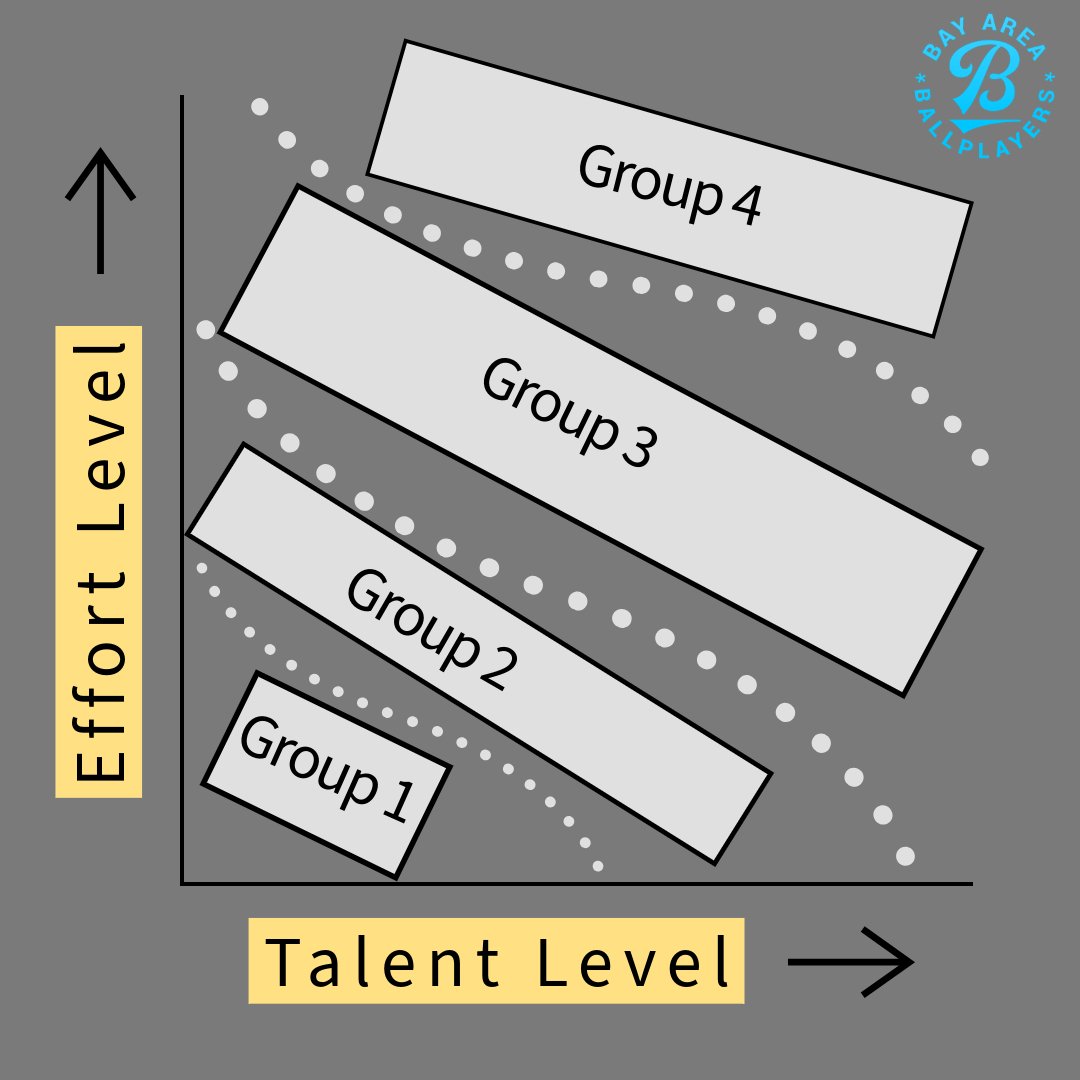Every team is comprised of a range of athletes. From a 10U water polo team to the San Francisco Giants, each team has players that vary in talent and skill level, as well as the effort and intensity that they bring to the team each day. I think if a coach can understand where his or her athletes are on the spectrum, they can have better expectations and ultimately make better decisions. And if the athlete (and their parents) can understand what type of player they are, they can be better informed as to where they should be putting their focus and attention.
Below is an oversimplified diagram of the correlation between talent level and effort level for athletes on any given team.
Group 1 are athletes that have little talent or skill in a given sport and are there to have fun
Group 2 athletes have some talent and skill, but don’t put in much effort to get better and improve
Group 3 are the majority of ‘competitive’ athletes. They range in skill and effort level, but are above-average in their sport
Group 4 athletes are either highly skilled, or highly motivated, or both.
Every coach wants a roster full of athletes in group 4, but that’s almost never the case. Even on professional teams, every roster has a few players in group 3 that may be super talented but don’t show up ready to play or give the effort that their team needs. And you’ll notice that an athlete that is more in the middle of the pack talent-wise will always be preferred if they are the player that overcomes their skill shortcomings with grit and determination and doing what it takes to help the team win.
The 2 key points that I believe can be taken from understanding this scale are:
There is almost never a defined cutoff point when coaches are making roster decisions
and
2. Athletes can and do move on both sides of this scale over the course of their playing career
We all know that rec sports opportunities where every player is guaranteed a spot and plenty of playing time have been reduced over the years. There are 2 main reasons - money and competitiveness. There is a lot of money to be made by the professionalism of youth athletics, and that money is driven primarily by the competitiveness of sports in the world today - from getting to the professional level where millions of dollars are on the line, getting to play in college (where being paid is also now a huge factor) to making a high school team.
1) Most competitive programs either have tryouts, evaluations, and/or roster placement. Having done many of these both as a player and coach, there is almost never a clear line where one roster ends and the next begins. This means that the difference between making the A team or B team or C team can be a matter of a degree or 2 on either end of the athlete spectrum. There are also other reasons, but for the sake of this exercise, the idea is to keep things in perspective related to where you or your athlete fits into every team’s equation. The reason that families tend to ‘tryout’ for multiple teams is because there may be a big drop-off in the athlete experience depending on which team they are on. The best sports programs get very clear on what they can provide - which usually means just having a single team at any age level, or doing everything in their power to make sure the athlete experience is equally great no matter which team they are on in their program.
2) Step 1 is understanding where you are on the spectrum. That can be done by having awareness and doing a self assessment, or asking a trusted coach. Step 2 is deciding where you want to go. Make no mistake, athletes move up and down on this scale all the time. Talent and skill level has much slower movement - it takes years for an athlete of average skill to become world class. But the effort side can jump up overnight if a commitment is made to great work ethic and doing everything you can to improve your weaknesses, be a great teammate, and help your team win.
I’ll leave you with this whiteboard list that a coach made many years ago that will always hold true


